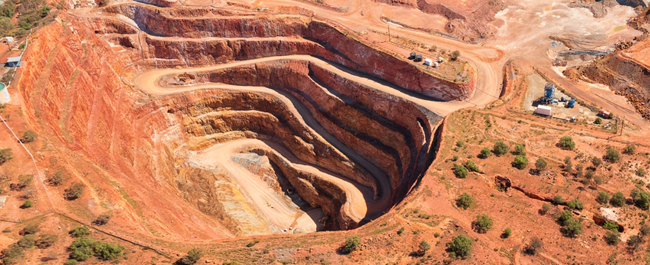Transforming copper exploration

Bristol researchers are working with the mining industry to target new copper resources that are critical for the electrification needed to meet climate change targets.
Research highlights
- Research has fundamentally changed the understanding of how copper ore deposits are formed.
- New insights improve the efficiency of exploration strategies and minimise environmental damage caused by drilling.
- Collaboration partner BHP saves over $10 million by narrowing exploration areas and targeting new copper resources more effectively.
- Major challenge for the mining industry.
As we transition to a low-carbon economy, the World Bank Group has estimated that demand for the copper needed to manufacture electric vehicles, wind turbines and photovoltaic cells will triple by 2050.
The challenge for the copper mining industry is that this increase in demand cannot be met by recycling alone. Another challenge is that most near-surface porphyry copper deposits (PCDs), which account for 75% of the world’s copper production, have already been discovered.
Copper exploration is further blighted by many ‘false positives’; where explorations at sites prove fruitless and cause significant costs and unnecessary environmental damage.
Changing the landscape
For over a decade, the University of Bristol has worked with the world’s largest mining company, BHP, to overcome these challenges and transform the identification of new world-class copper resources.
Because copper comes from magmas with copper concentrations of just parts per million, it is only economically and environmentally affordable to extract copper from rocks where natural processes have concentrated copper into ore deposits that, despite forming at depth, are today not very deep underground.
With their expertise in volcanology, magma petrology and landscape evolution, the Bristol team’s research has focused on fluid-mediated processes that transport metals from the magmas to ore bodies. This has helped to improve understanding of how viable ore deposits with economic concentrations of copper are formed.
The work has also helped to explore the parental magmatic systems and landscape evolution that can expose and enhance the copper concentration of ore deposits which are central to the discovery of valuable copper reserves.
Impact on major explorations
Working closely with BHP, the Bristol team has used the insights developed from this research to identify the most likely locations to find high-value copper deposits, plus which areas to avoid.
The research has informed regional exploration strategy and influenced decisions at specific sites such as a PCD prospect in Chile for which data from Bristol were key to the decision not to continue with costly drilling.
In 2017, application of the new understanding of the architecture and dynamics of PCD forming systems also enabled BHP to reinterpret old exploration data and to locate areas in North America with good potential.
BHP’s Head of Exploration in North America commented: “Thanks to [Bristol PCD’s] work, BHP has refined its North American copper exploration strategy… bringing forward not only areas to explore but, critically, areas to no longer explore.”
Cost savings and wider benefits
The models and tools developed through the collaboration have improved BHP’s copper-exploration strategies, saving the company over $10 million while also avoiding environmental damage and safety risks through preventing unnecessary drilling.
Collaborating with BHP has also given Bristol’s researchers access to key datasets and facilitated knowledge exchange that has enabled rapid advancements of improvements to copper exploration. In return, BHP has had first-mover advantage on new models, tools and strategies resulting from the research.
Research at Bristol provides the foundation for continued work on new, more sustainable extraction methods that could substantially increase copper and other metal reserves and fundamentally change the copper mining industry.
Thanks to [Bristol PCD’s] work, BHP has refined its North American copper exploration strategy… bringing forward not only areas to explore but, critically, areas to no longer explore.
Connect with the researcher
Professor Alison Rust, Professor of Physical Volcanology, Earth Sciences
Cite the research
Gilmer, A, Sparks, RSJ, Rust, A, Tapster, S, Webb, AD, Barfod, D, 2017. Geology of the Don Manuel igneous complex, central Chile: Implications for igneous processes in porphyry copper systems. Geological Society of America Bulletin. 129, B31524.